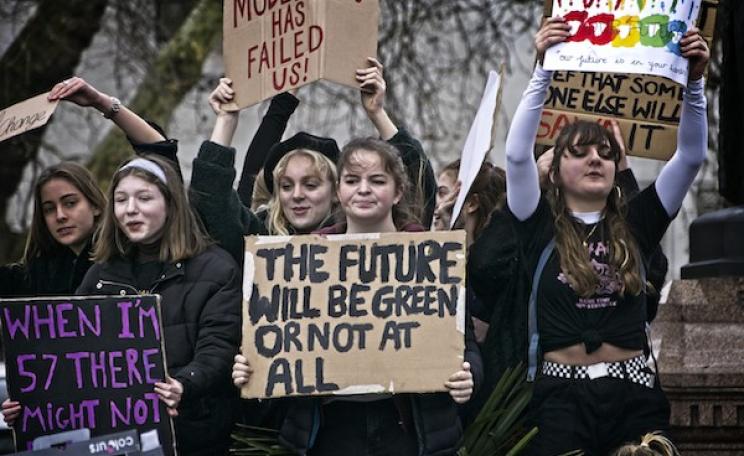I’d rather have a detailed, well-planned carbon reduction strategy that will bank a 25 per cent CO2 reduction over five years.
Just under a thousand firms across the UK have commendably made their Net-Zero pledges, based on the the United Nations endorsed Science-Based Initiative framework (SBTi).
Yet as a sustainability advisor, I know that few corporations understand the real mechanics, and implications, of SBTi’s framework.
I feel strongly that as faith in government action is constantly undermined, protecting faith in corporate climate action is more important than ever.
Unattainable
Large parts of the world are experience the most intense bout of heat waves recorded to date, increased international attention has been placed on our climate targets, and how we will reach them. With that attention comes reinvigorated lofty corporate climate target setting. In the UK,
The SBTi process has quickly become the global standard for prescribing how many emissions companies should cut, and how - with almost 6,000 companies signed up.
Yet under the SBTi’s rigid framework, we are destined for another round of hollow climate pledges.
This only dampens both public faith and corporate drive to make real, lasting changes to their business models. More importantly, we waste the most precious resource we have in the fight against climate change - time.
Indeed, setting misunderstood, unattainable or unrealistic targets should be considered greenwashing’s well intentioned, yet naive cousin, ‘greenwishing’.
Economic
The SBTi has been unquestioningly accepted as scripture by droves of corporations looking to reach net-zero by 2050, as described in a recent white paper published by my consultancy firm Eight Versa.
While well intentioned, SBTi’s framework will fall flat when exposed to the reality of today’s dynamic business landscape.
This is because SBTi uses an ‘absolute contraction’ method to define net-zero. This measurement requires companies to reduce their absolute emissions by a total of 90 per cent by 2050, then allowing them to off-set the remaining 10 per cent of emissions.
SBTi differentiates between corporates and small and medium enterprises (SMEs). Corporates, or businesses of over 500 employees, have the option to reduce their Scope 3 emissions on an ‘intensity metrics’ basis.
This means that businesses can set an emissions target that is relative to an economic or operational variable, like emissions per sale, for example.
Persist
I’d rather have a detailed, well-planned carbon reduction strategy that will bank a 25 per cent CO2 reduction over five years.
As a sustainability advisor, I know that it simply isn’t feasible to expect small businesses, especially climate tech start ups, to be able to grow, employ people, support our economies, all while aiming to reduce their absolute emissions by 90 per cent.
Take Tesla. Tesla abated some 13.4 million metric tonnes of CO2e through the sale and use of their products. Yet Tesla cannot become an SBTi aligned company, as it cannot increase its vehicle production by a factor of 10 while simultaneously contracting its GHG emissions.
The same will prove true for hundreds of companies who have revolutionary ideas, but would not be able to scale them due to the restrictive nature of SBTi’s dogma.
However, companies sign up to SBTi, regardless of whether they will be able to meet SBTi’s criteria. For many, it’s easier to “wish it better”, and pass the challenge onto their professional predecessors, than it is to actually commit to the hard graft of decarbonisation.
The truth is that the climate challenge will require a World War II level of mobilisation of resources, capital and research and development. That’s more costly than anyone wants to admit, and requires a critical mass of global participation. Indeed, it cannot be allowed to persist as a cosmopolitan luxury concern.
Pathway
If companies string the public along and tell the public that decarbonisation is ‘all in hand’, then when we realise the job is much harder than previously realised or communicated, then companies will have engaged in a particularly pernicious form of greenwashing - greenwishing.
This practice is particularly insidious because on top of the precious years it wastes, it will also squander the small sliver of reputational capital they have left.
The myth that decarbonisation means bankruptcy can be debunked on multiple levels. However, if we leave the challenge too late, which some may argue we already have, then we only have two options.
The first is that corporate fatigue, apathy and nihilism blocks any further decarbonisation efforts whatsoever. The second is that the scramble for decarbonisation creates an unbearable economic dislocation.
We simply will not have the time to create the frameworks, invest in the solutions, and design the financial incentives we need in order to plot a decarbonisation pathway.
Preach
As a sustainability advisor, I’d rather have a detailed, well-planned carbon reduction strategy that will bank a 25 per cent CO2 reduction over five years, than a lofty, detail-thin yet jargon-thick 20 year net zero plan, that delivers nothing more than good vibes in the moment.
Corporates aren’t always villains. They provide the public with goods and services they want and need. They often have more power and resources than governments do to unlock the disruptive technologies we need.
However, just like governments, companies are subject to a quagmire of politics; it’s easier to preach and posture than it is to do the hard technical work of finding solutions.
We have no time for hollow promises. Let’s design a decarbonisation program that works, and then stick to it.
This Author
Chris Hocknell works with sustainability consultancy firm Eight Versa.




